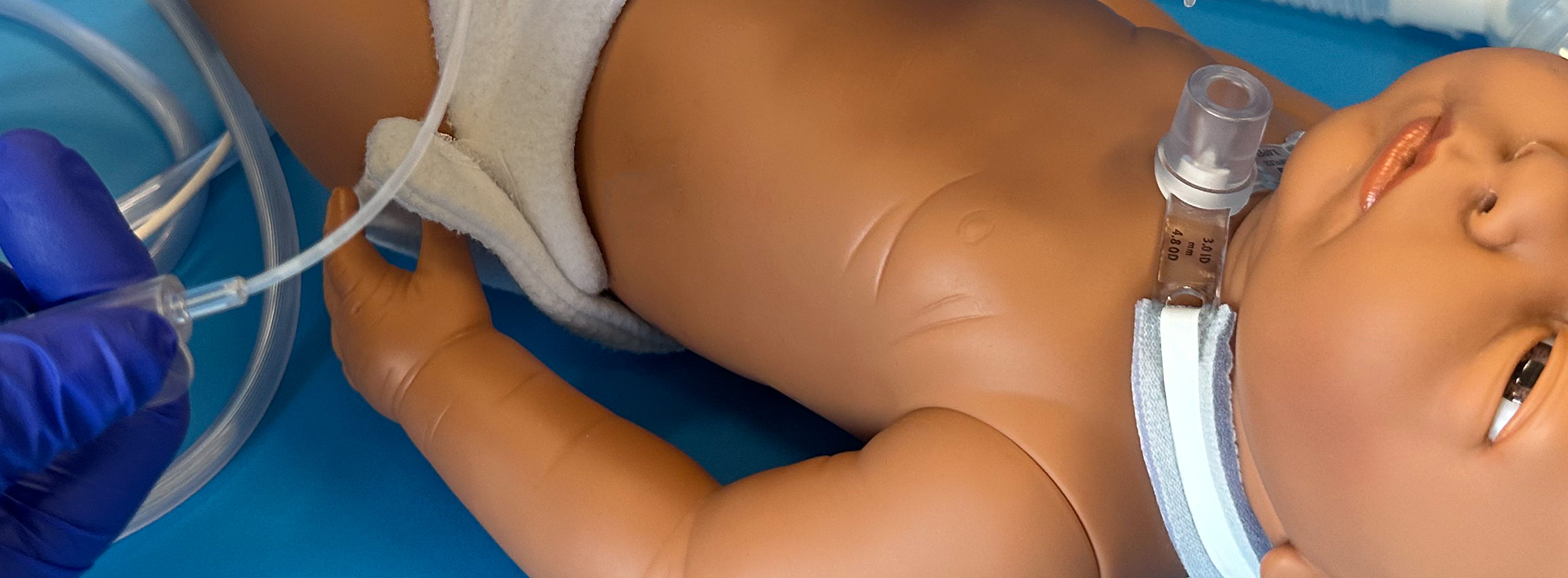By the end of this page, you will be able to:
- demonstrate how to give oxygen to your child
- understand how heated high flow humidity works
How do I give oxygen to my child?
There are different types of devices that help with delivering supplemental oxygen to your child. Providing supplemental oxygen to your child means that your child will be using a home oxygen delivery system to breathe in more than room air, which is 21% oxygen.
The type of device to use depends on your child’s condition and their oxygen needs. Your child’s health-care team will assess your child to determine which device is best suited for their oxygen needs.
Tracheostomy mask
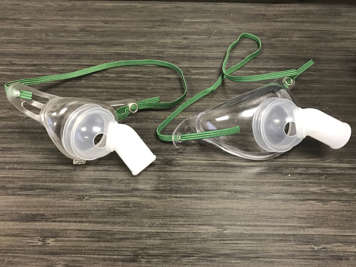
A tracheostomy mask fits loosely over the tracheostomy tube with an adjustable elastic strap that fits around the neck to provide humidified air and/or oxygen to your child. Tracheostomy masks come in different sizes. Always ensure the mask is over the tracheostomy tube to direct the warm moisturized air toward the tracheostomy tube (do not overtighten the elastic strap). It is normally used with a Venturi device (see below) or with a high humidity set-up. Also note the correct positioning of the mask in the pictures below.
Venturi device
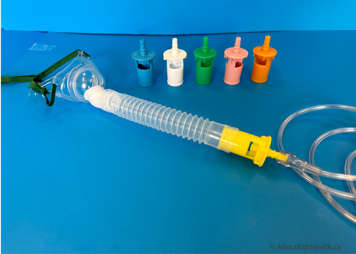
A Venturi device mixes oxygen from the oxygen source (e.g., concentrator, tank) with the surrounding air to produce a desired oxygen concentration. It is normally used with a tracheostomy mask.
Each Venturi connector is designed for a specific oxygen concentration (for example 24, 28, 31, 35 or 40 per cent). This is indicated on the connector. The connector will also indicate the amount of oxygen you need to set to achieve the desired concentration.
You must set the oxygen flow rate setting on the oxygen system as indicated by the connector. Your child’s health-care team will explain which oxygen concentration and corresponding coloured connector(s) are right for your child.
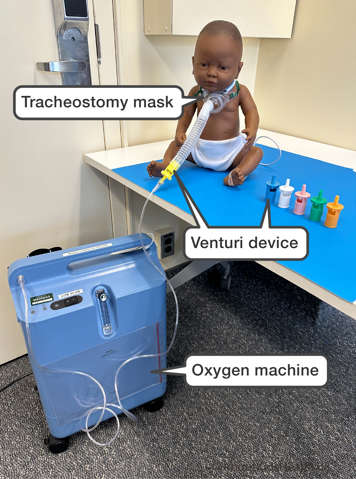
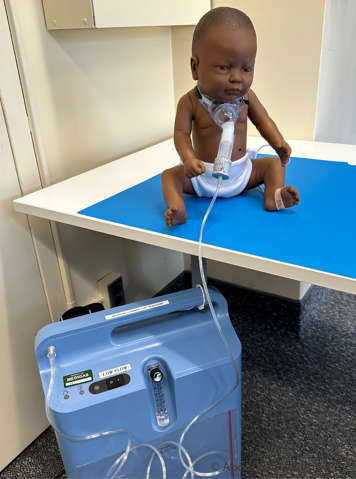
Adding oxygen to a heat and moisture exchanger (HME)
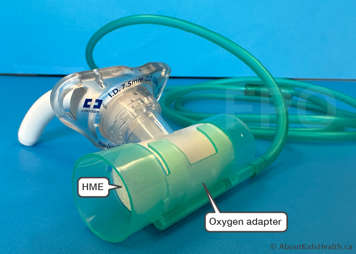
A heat and moisture exchanger (HME) is an attachment that fits on the end of a tracheostomy tube. It has a sponge-like filter inside the adapter. A HME works by trapping heat and moisture in the air that your child breathes through their tracheostomy tube and delivers it to the lungs, replacing the function of the nose and mouth.
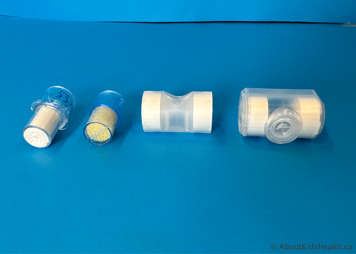
HMEs come in various shapes and sizes and are typically used during the day or when the child is ambulating. When your child is not using the HME, the tracheostomy must be humidified using another form of humidified air.

Adding oxygen to the HME is possible. There are a few ways to do this.
- ThermoVent/Oxy-Vent Oxygen Delivery System®. Insert the HME into the ThermoVent® system. Attach the HME to tracheostomy tube. Turn on the flow of oxygen (lpm) as prescribed by your child’s health-care provider.
- Non-humidified tracheostomy mask that will deliver oxygen over the HME
Heated high flow humidifier (for example, Airvo)
A heated high-flow humidifier, for example, Airvo, warms and humidifies the air your child breathes. It makes the air warm and moist before it is sent through a tube to your child’s tracheostomy. Oxygen can be added to increase the oxygen percentage, depending on your child’s needs. Airvo is more commonly used when children are asleep, have thick secretions or are not moving around.
Please keep in mind that a humidifier should always sit lower than your child’s head. Never empty water that collects in the tubing into your child’s tracheostomy.
Heated high-flow device (e.g., Airvo)
- Connect the oxygen tubing to the oxygen inlet port of the Airvo, located on the back of the unit.
- Connect the other end of the oxygen tubing to the flow meter of the oxygen system. Turn on the flow of oxygen (litres per minute or LPM) as prescribed by your child’s health-care provider. Turn off the oxygen flow when your child is not using the Airvo.
Manual resuscitation bag
Oxygen can also be added to your child’s manual resuscitation bag, if they have one. You will need approximately 6-10 LPM of oxygen to fill up the reservoir bag of the resuscitation bag. Please refer to the earlier chapter on manual resuscitation for more details.
Ventilator
If your child is on a ventilator, and they require supplemental oxygen, the oxygen will be added directly to the ventilator by a special connector.
Monitoring your child while on home oxygen therapy
Many children who are receiving home oxygen therapy will sometimes need a higher flow rate (more oxygen) than their usual prescription. This may happen at meal times, if your child is ill and during or after increased activity.
Your health-care team may give you an oximeter so that you can monitor your child’s oxygen levels and compare them to the values your child’s health-care team is expecting. Your health-care team will tell you when to use the oximeter and the target oxygen saturation level for your child.
Precautions
- Contact your health-care team immediately if you ever notice that your child needs more oxygen and/or they are showing signs of respiratory distress.
- Do not feed your child during an episode of distress unless your child's health-care team tells you to.
